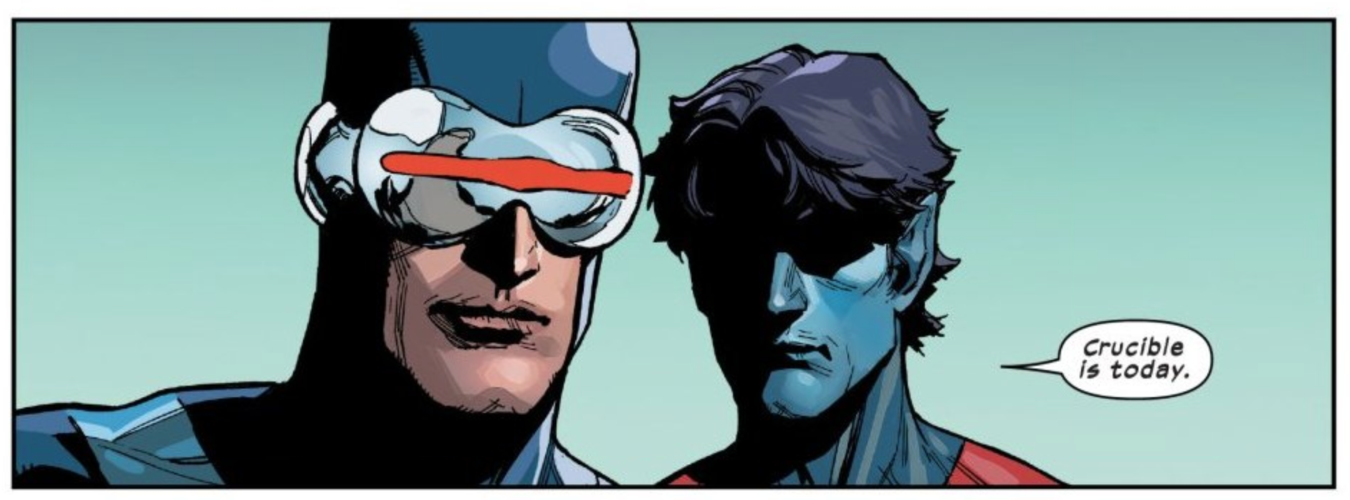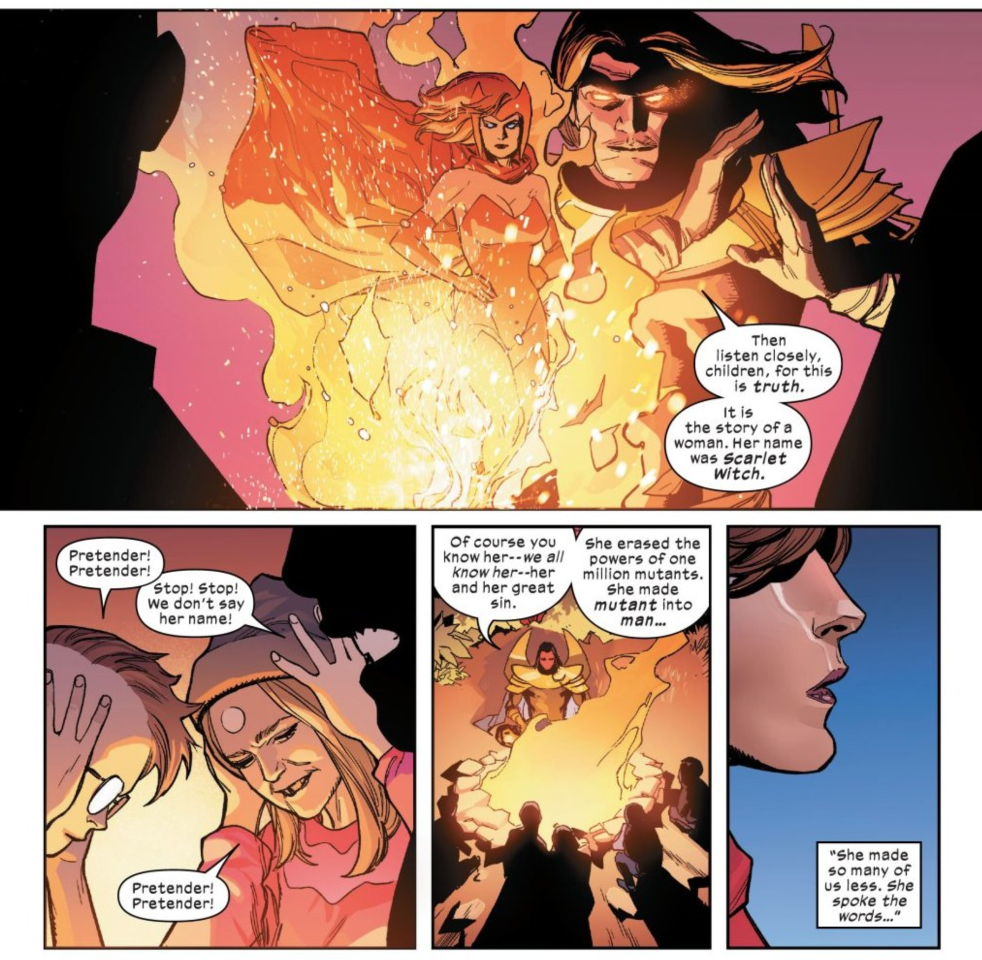Crucible
“Lifedeath”
X-Men #7
Written by Jonathan Hickman
Art by Leinil Francis Yu
Color art by Sunny Gho
Let’s start with audacity of the title. Given that this is an issue about an event called Crucible that is mentioned by name many times over, it would be sensible to simply call the issue “Crucible” or similar. But no, Jonathan Hickman can’t quite ever be bold enough, so he named it “Lifedeath,” after one of the most famous and acclaimed Chris Claremont stories in which Storm struggles with life after losing her powers. It makes sense: This is an issue about what becomes of the million mutants who lost their powers to the Scarlet Witch’s “no more mutants” spell in House of M, and how to be reborn with their powers they must first die. It’s the core dilemma of the original Storm arc taken to a new extreme, with Nightcrawler and Cyclops on the margins of the story pondering the spiritual implications of the Krakoan resurrection protocols.
Hickman takes his time doling out hints of what Crucible is through the first half of the issue, indicating the solemn intensity of the occasion and how heavily it weighs on the other characters. The context is revealed as we see Exodus explain the reason for the event to a group of mutant children around a fire in the forest, emphasizing the great evils of the Scarlet Witch and the horrors she inflicted on mutantdom with just three words. The children repeat language from the text pages referring to the Scarlet Witch and M Day in House of X #4 – “the pretender,” “NO MORE” – and suggest that an emerging part of Krakoan culture is the vilification of Wanda Maximoff and, by extension, the Avengers. This indoctrination makes sense, particularly given the extreme lengths the Krakoans must go to rectify her deeds, but the reader is aware that Scarlet Witch is still written as a heroic figure in Avengers comics. It now seems inevitable that she will enter this story at some point and have to reckon with a mutant nation indoctrinated to think of her as a Hitler figure.
This scene is the first indication of what Hickman is planning for Exodus, a somewhat underdeveloped villain created in the 1990s that he’s placed on the Quiet Council. The main thing about Exodus is that he’s from the distant past – he was raised in the 12th century but held in stasis by Apocalypse for centuries – and that he’s a zealot who aligned with Magneto’s most extreme beliefs but was more harsh and unyielding. It would seem that Exodus’ zealotry is being positioned as a parallel to Nightcrawler’s spirituality here, as we see Nightcrawler wrestle with moral questions and decide that he must start a mutant religion for those questioning their faith in the context of Krakoan culture and the implications of endless rebirth. If the pure and heroic Nightcrawler is offering a theology based on kindness, forgiveness, and pursuit of peace, Exodus is clearly fostering a more violent and unforgiving fundamentalism in his young followers.
In the final third of the issue we see that Crucible isn’t merely about a depowered mutant dying to be “made whole” in resurrection, but rather a sacrement informed by Apocalypse’s “survival of the fittest” ethos. Melody Guthrie, the younger sister of Cannonball and Husk, must face the hulking and enormously powerful Apocalypse in a duel in which he taunts and tests her. The mutants of Krakoa don’t want to deal with mass suicide of depowered mutants – they want a show of dedication to fight for their people. They must be found worthy.
This makes sense, but is also sort of troubling. The ritualistic nature of this speaks to both Apocalypse and Exodus’ roots in the distant past, and shows how their taste for bloody sacrifice and symbolism is shaping the emerging culture of Krakoa. This is another contrast with Nightcrawler’s sensibilities as a Catholic – he’s a very New Testament sort of guy, after all. It will be interesting to see how his hippie-ish brand of Christianity informs a new religion based upon many ideas that his culture has disproven, or at least called into question.
Some notes:
• Hickman continues to tease the details of Cyclops, Jean Grey, Wolverine, and Emma Frost’s apparently bisexual polycule situation. I realize some would love for this to all be spelled out and made full canon, but I actually prefer him sketching this out in ways that suggest something as filthy and overtly queer as the reader wants it to be. Don’t get hung up on the plausible deniability, get excited by how far he’s willing to go to suggest that Wolverine and Cyclops are regularly fucking each other.
• I love that Cannonball, always an incredibly normal and down-to-earth dude, is just getting used to raising a family in the alien Shi’ar culture and comes home to discover that everyone he knows has created a new culture that’s maybe twice as strange. But hey, his dead siblings are alive, so he’s he to complain?
• We finally see Warlock separated from Cypher’s arm and it’s very odd and creepy. It’s hard to tell whether this is hinting at something bad, or just showing us that Cypher is just a really weird guy with very unusual friends.



